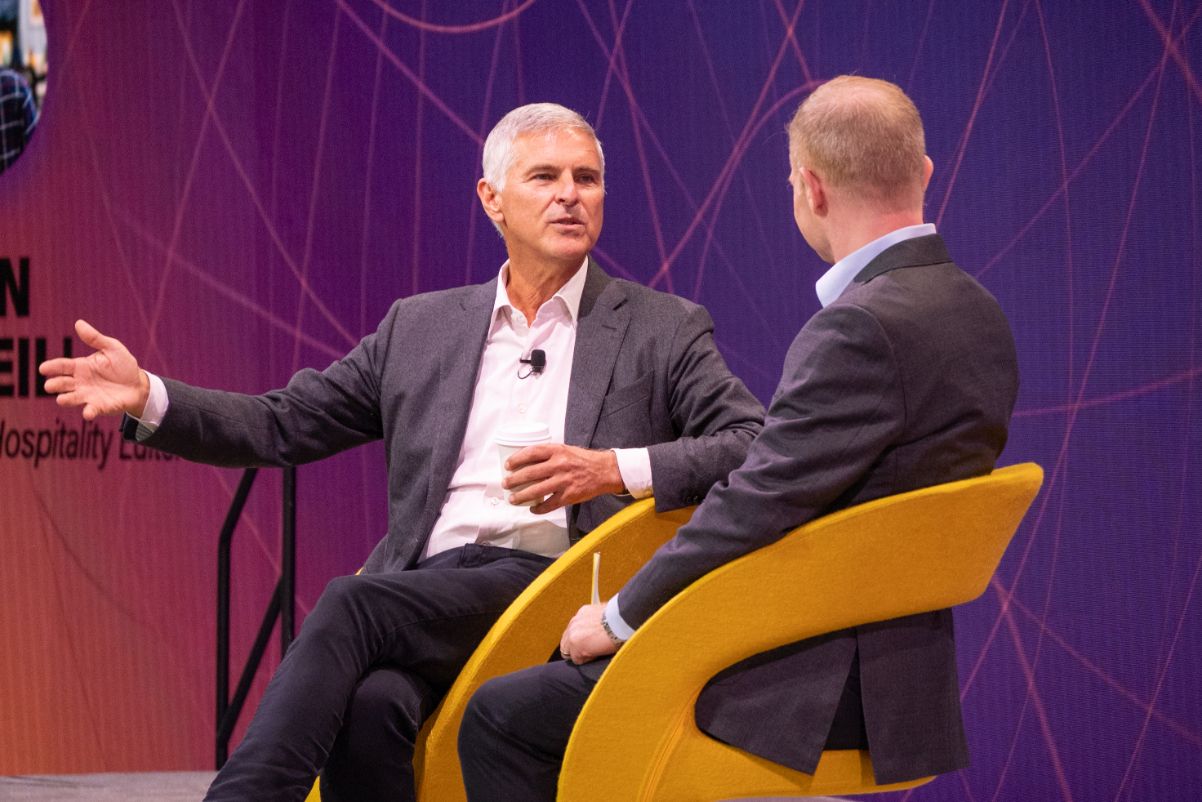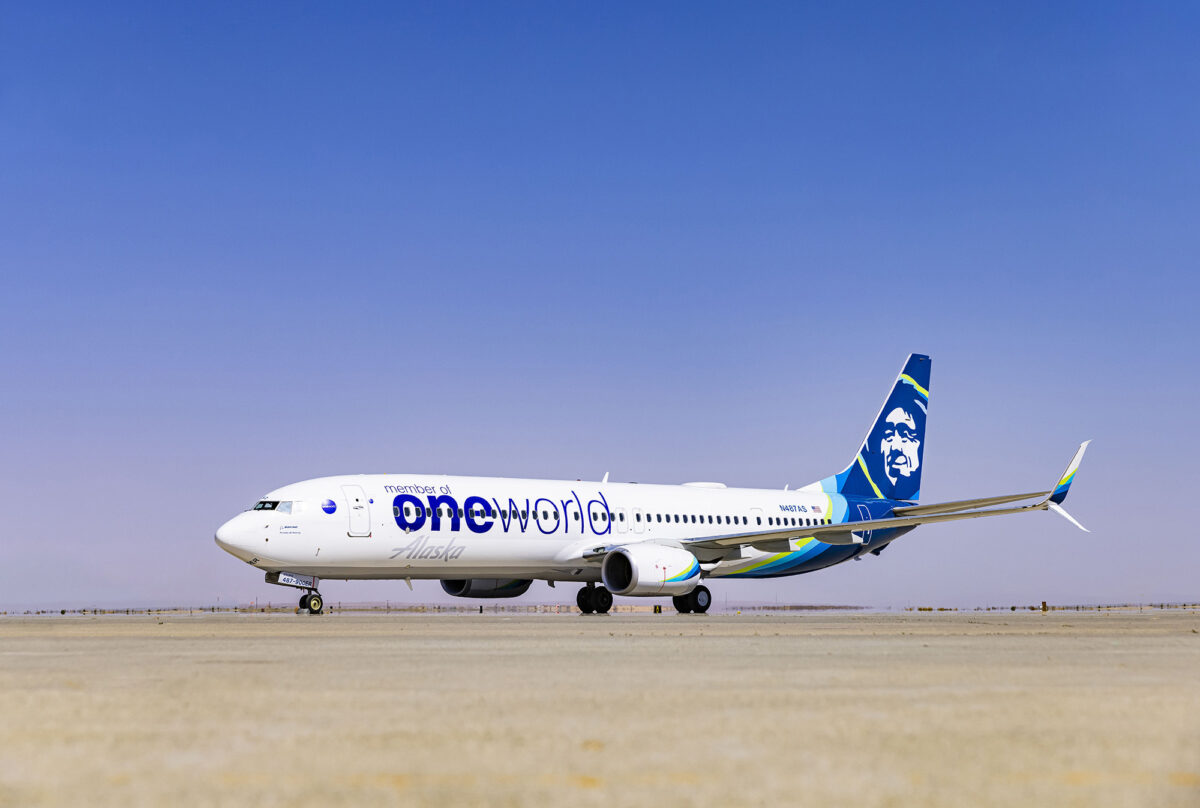Marriott Finally Reveals How It Will Combine All 3 of Its Loyalty Programs

Skift Take
It's the moment 110 million travelers have been waiting for since 2016.
Today, Marriott announced how the company will formally unite all three of its hotel loyalty programs — Marriott Rewards, The Ritz-Carlton Rewards, and Starwood Preferred Guest (SPG).
But instead of debuting a single new program that replaces and combines all three into one, Marriott has decided to keep all three programs as is — for now. Beginning in August, members of each program will have the seamless ability to book stays and earn or redeem points across 29 of Marriott's 30 hotel brands, comprising more than 6,500 hotels around the world.
By early next year, the company expects to debut a new loyalty brand that will replace the three, as well as a new single reservations system. Until then, the three loyalty brands and sites will remain in place, but members will have a single account with the same membership number, and the same set of benefits beginning in August.
Currently, when a Marriott Rewards member wants to book travel or earn or redeem points, she will only see hotels from Marriott 18 legacy brands when she logs onto her Marriott Rewards account. The same applied to SPG members, who would only see hotels from Starwood's 11 legacy brands.
As soon as Marriott finalized its $13.3-billion acquisition of Starwood Hotels & Resorts in September, 2016, it did allow members of all three programs to link their accounts, however, and to have matching status. So, an SPG member could link his account to a Marriott Rewards account to exchange points, and vice versa.
With the new unified program scheme, the 110 million members of all three programs will be able to earn and redeem points at hotels from all of Marriott's brands when they log onto their respective accounts, with the exception of the company's luxury Bulgari Hotel properties. They will also have access to the same set of benefits, which includes 110,000 different experiences in 1,000 destinations around the world, and a single set of membership status tiers.
The Best of Both?
For many frequent travelers, one of their biggest concerns related to the Marriott-Starwood merger was what would eventually happen to the loyalty programs.
Faithful SPG members were especially concerned that when SPG was eventually combined with Marriott Rewards, many of the elite perks that they benefited from would be eliminated. The SPG program had a cult following among frequent travelers because it was revolutionary in the benefits it offered to members. When SPG debuted in 1999, it had no blackout dates or capacity controls, something never before offered by a hotel loyalty program.
In the period leading up to Marriott closing the Starwood deal, Marriott CEO Arne Sorenson made repeated assurances to SPG members that the company would do all it could to take the best of each program and bring it together.
Sorenson also said that loyalty was the "most important thing for us to succeed at" with regard to the multibillion-dollar deal. Loyalty is also a major driver of Marriott's revenues, generating approximately 55 percent of its business. Marriott's loyalty numbers are also among the largest in the world, with InterContinental Hotels Group coming close with more than 100 million members.
So, has Marriott succeeded in taking the best of both SPG and Marriott Rewards and putting them together? One travel loyalty program expert believes so.
"I was really skeptical when they said they would take the best of both programs," Gary Leff, author of the popular travel loyalty blog, View from the Wing. "But for a first approximation, it's not wrong here. Starwood was the stronger elite program. Marriott Rewards was the stronger earn-and-burn program. They've taken SPG and stapled it onto the Marriott Rewards program."
When Marriott promoted David Flueck, a 13-year Starwood veteran, to serve as the company's new senior vice president of loyalty in March 2017, it was a clear sign the company wanted to keep as much of SPG in the new loyalty program.
Details of the New Loyalty Structure
Flueck said that with the new program structure, members earn, on average, approximately 20 percent more points for their spend now.
The same points conversion of one SPG Starpoint to three Marriott Rewards point also remains with the new loyalty currency. So, if an SPG member currently has 100,000 Starpoints, for example, she will then have 300,000 points under the new loyalty scheme.
Members will earn 10 points per dollar of spend for all brands, except for Residence Inn, TownePlace Suites and Element, which will be five points per every dollar spent. All loyalty members will begin earning points for food and beverage and qualifying incidentals on their folio, instead of just the room rate, in August, too.
"Not only have we made the earning richer, but we've also enhanced our benefits," Flueck added. "Things that SPG members have loved, like our confirmable upgrades and suite night awards, and our SPG Ambassador program are staying. And the mobile check-in we had with Marriott Rewards is staying."
He also said that with the new program, it's easier for members to earn status.
The new loyalty framework has a total of five elite status tiers: Silver Elite (10 nights), Gold Elite (25 nights), Platinum Elite (50 nights), Platinum Premier Elite (75 nights), and Platinum Premier Elite with Ambassador (100 nights and $20,000 of spend). Lifetime status in both SPG and Marriott Rewards will continue to be recognized.
"What's new for SPG members is that we now have Silver status, which we never had before, at 10 nights, so we've made it easier for SPG members to start earning elite benefits sooner," Flueck explained. "On the Marriott side, we've made Gold and Platinum status easier to obtain with a lower threshold."
As part of the new program, the SPG mobile app is also being updated so that all Marriott apps will include mobile check-in and check-out, chat functionality with hotel staff, and mobile room keys.
Another important part of the new loyalty program that frequent travelers will be paying close attention to is the new program awards chart, which has yet to be released by Marriott. All hotels in the loyalty portfolio will have no blackout dates for redemption, and the chart will be updated in 2019 with off-peak and peak pricing.
"When we roll out our new award chart, members are going to see that more properties are actually getting less expensive than are getting more expensive" with regard to how many points are needed to redeem a free night's stay, Flueck said.
Hotel owners should also see the costs associated with paying for points redemptions at their properties lowered. "We've lowered [loyalty] costs to owners by about 20 percent as well," Flueck said.
The New Co-Brand Credit Cards
What's helping Marriott to lower the cost of the loyalty programs for its hotel owners is the debut of new co-branded credit cards associated with the loyalty brands. Co-branded credit cards have become increasingly popular among loyalty members who want to earn points on everyday purchases.
On May 4, JPMorgan Chase is debuting the new Marriott Rewards Premier Plus credit card and in August, American Express will have a new SPG American Express luxury card.
Existing Marriott Rewards, Ritz-Carlton Rewards, and SPG cardholders can also rest assured that with the new cards they will still be able to transfer points earned through their credit cards to more airline partners than before — more than 40 in total — beginning in August.
"This includes new options for Marriott Rewards members (Virgin Australia, Aegean Airlines, Air New Zealand, etc.) and new options for SPG members (Qantas, JetBlue Airways, Turkish Airline, etc.)," a Marriott spokesperson noted. "You'll still be able to transfer points to frequent-flyer miles, and the new ratio will be 3 points for one mile. For every 60,000 points transferred to miles, we'll add a 15,000-point bonus providing you with a total of 25,000 miles in the airline program of your choice." He added, "Bear in mind, that SPG members will see their points increase at a 1:3 ratio when they combine their accounts in August."
The Chase card has a $95 annual fee and lets cardholders earn six Marriott Rewards points per dollar at participating hotels, and two points per dollar on other eligible purchase. It also includes a free-night certificate for any property worth up to 35,000 points and guaranteed elite status.
The American Express card offers six points per dollar spent at participating hotels, three points per dollar spent on airfare and U.S. restaurants, and two points per dollar spent on other eligible purchases. Cardholders also get $300 in annual statement credits for on-property purchases, a free night award up to 50,000 points, automatic Gold status, a $100 fee credit for Global Entry, and Priority Pass Select membership.
Existing credit cards for Marriott Rewards, Ritz-Carlton Rewards, and SPG will continue to exist and be actively marketed. Card holders can choose to keep their current cards, or apply for or upgrade to the new ones. A spokesperson for Marriott said the current cards will also be "refreshed" in August and that the current SPG American Express card will offer a "rich sign-up bonus."
Changes to the co-brand credit cards for Canada, Japan, the United Kingdom, and the United Arab Emirates will be announced at a later date.
More Experiences
Like many of its hotel peers — Hyatt, Hilton, and Wyndham included — Marriott's new loyalty program also emphasizes access to unique experiences for its members. Incorporating Marriott's 2017 investment in the tours and activities platform, PlacePass, the new loyalty program will give members access to more than 110,00 new Moments experiences, as well as 8,000 exclusive member-only experiences that can only be redeemed with points.
Experiences might include tours, day trips, and access to high-demand events like the Super Bowl or the Coachella music festival, as well as master classes and meet-and-greets with professional athletes, musicians, chefs, and actors. A special Moments Live collection of musical and culinary events harnesses Marriott's partnerships with Universal Music Group and LITV Entertainment Group.
Loyalty members earn points any time they purchase an experience and, in the future, all Moments experiences can also be redeemed with points.
How It Stacks Up to Other Hotel Loyalty Programs
Features of Marriott's new loyalty program mirror many of the moves made by its hotel peers with its emphasis on experiences, co-branded credit cards, improved mobile apps, and elite tiers.
But more importantly, the program also appears to be taking an approach that addresses the loyalty gap between frequent road warriors and those who may not be on the road all that often.
Whereas a program like Wyndham Rewards has been designed to appeal to "everyday travelers" and others, like World of Hyatt, were designed with elite travelers in mind, the new Marriott program — whatever it may eventually be called — sits squarely between the two.
For a frequent traveler like View from the Wing's Leff, his preference still leans toward World of Hyatt as his favorite loyalty program, but he said that the size of Marriott's hotel portfolio is roughly 10 times greater than that of Hyatt's. He said Marriott's new program also offers a "much stronger value proposition than Hilton or InterContinental Hotels Group."
"If Hyatt's footprint of about 600 or so hotels works for you, it's great," Leff said. "But for a lot of people, 600-some hotels won't take care of their needs."
UPDATE: This article has been updated to correct that all of the existing credit cards associated with the Marriott Rewards, Ritz-Carlton Rewards, and SPG programs will continue to be actively marketed after August.




